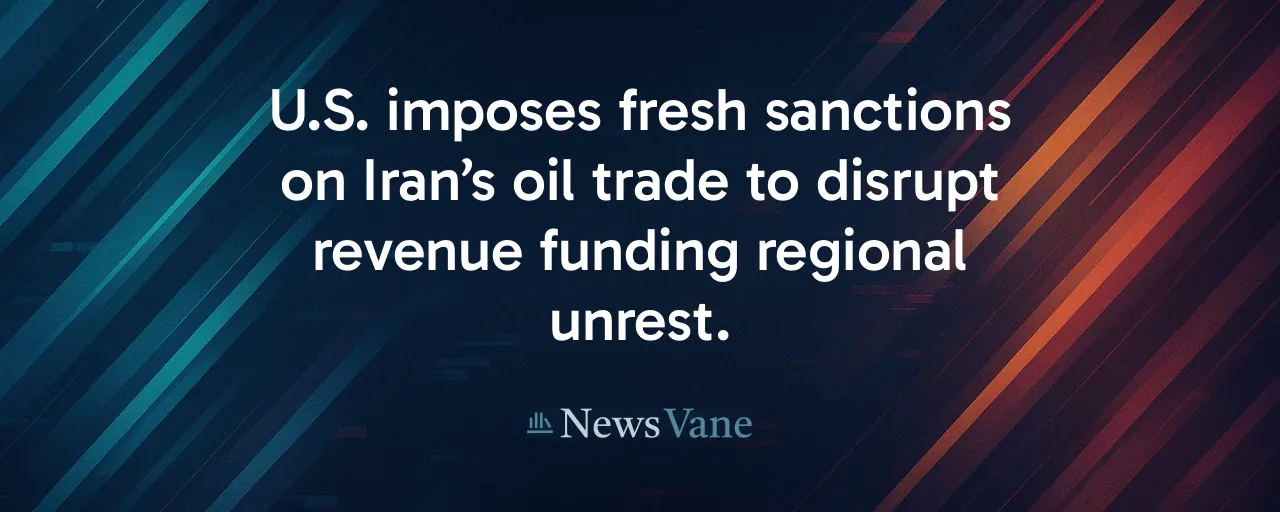A Fresh Crackdown on Iran's Oil Revenue
The United States has unleashed a new wave of sanctions targeting companies and vessels involved in Iran's petroleum and petrochemical trade. Announced on July 3, 2025, by the Department of State, these measures aim to choke off revenue that Iran allegedly uses to fund regional instability and domestic repression. Firms like Kaveh Methanol Company and tankers such as Artemis III now face asset freezes and U.S. transaction bans, signaling a broader push to disrupt Iran's economic lifeline.
This action extends a strategy rooted in National Security Presidential Memorandum-2, which revived the 'maximum pressure' campaign in February 2025. By designating entities across Iran, India, Panama, and the United Arab Emirates, the U.S. seeks to dismantle networks that move millions of barrels of Iranian crude and liquefied petroleum gas. Yet, the move has ignited a broader conversation about balancing economic pressure with global stability and civilian welfare.
The Shadow Fleet's Dangerous Dance
At the heart of this crackdown lies Iran's 'shadow fleet,' a network of tankers that dodge detection to ship oil and petrochemicals. Vessels like Bateleur and Rievieria I, managed by newly sanctioned firms, often disable their Automatic Identification System beacons, a practice known as going 'dark.' This tactic obscures cargo origins but raises serious safety risks, as AIS helps prevent collisions at sea.
Maritime experts point out that these dark voyages complicate enforcement. Tankers use ship-to-ship transfers and forged documents to mask Iranian oil, blending it with other cargoes to reach buyers, often in Asia. Research shows Iran's shadow fleet has adapted to sanctions since 2018, reflagging vessels and exploiting lax port oversight. The U.S. designations aim to disrupt these tactics, but enforcement hinges on global cooperation, which remains uneven.
Economic Ripples Across Borders
Sanctions on Iran's oil trade carry far-reaching economic effects. By targeting petrochemical exports, the U.S. aims to slash billions in annual revenue, weakening Iran's currency and limiting its ability to import goods. Cross-country studies confirm sanctions can cut export earnings significantly, yet Iran’s adaptive tactics have kept some revenue flowing, often through Chinese refiners buying discounted oil.
Global markets feel the strain too. Shippers, insurers, and refiners face higher compliance costs, while secondary sanctions deter investment in Iranian energy. These measures risk incremental supply shifts, potentially nudging oil prices upward. Meanwhile, international trade finance grows more complex as banks avoid transactions that might trigger U.S. penalties.
Humanitarian Costs in Focus
The human toll of sanctions sparks intense debate. Reduced foreign exchange has driven Iran’s inflation above thirty percent since 2018, hiking consumer prices and limiting medical imports. Academic studies link these measures to shortages of drugs for cancer and epilepsy, hitting low-income households hardest. Humanitarian groups argue that banking restrictions, even if unintended, block essential supplies.
Efforts to ease civilian suffering exist but face hurdles. Proposals for secure financial channels to fund food and medicine imports struggle against the broader sanctions net. Balancing economic pressure with humanitarian needs remains a persistent challenge, prompting calls for targeted exemptions to protect vulnerable populations.
Lessons From Decades of Pressure
Sanctions on Iran trace back to the 1979 hostage crisis, expanding over terrorism, missile, and nuclear concerns. The 2015 nuclear deal briefly eased energy and financial restrictions, but the U.S. exit in 2018 and subsequent Executive Order 13846 reinstated broad measures. The latest designations build on this history, reflecting a strategy that bets on economic isolation to force concessions.
Scholars note that sanctions work best when paired with diplomacy. The 2015 deal showed Iran would cap enrichment for relief, but pressure alone has not secured lasting change. Experts agree multilateral efforts and clear negotiation paths increase effectiveness, while unilateral moves risk alienating allies and hardening Iran’s stance.
Navigating a Complex Path
The latest sanctions underscore a high-stakes balancing act. Cutting Iran’s revenue aims to limit its regional influence, but enforcement gaps, like lax maritime oversight, let some oil slip through. Meanwhile, civilian hardships and global market disruptions highlight the need for precision in targeting elites over ordinary citizens.
Areas for compromise exist. Escrow systems could direct limited oil revenue to humanitarian imports, while enhanced maritime inspections under global oversight might curb shadow fleet tactics. Phased sanctions relief tied to verifiable nuclear rollback offers another bridge, provided all sides commit to talks.
Ultimately, resolving this standoff demands cooperation beyond unilateral pressure. Stronger vessel-tracking rules, diplomatic off-ramps, and protections for civilian welfare could align economic tools with broader goals of stability and safety, both at sea and on land.
